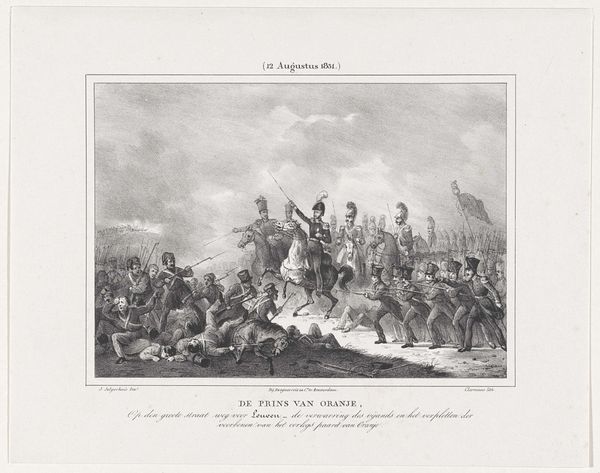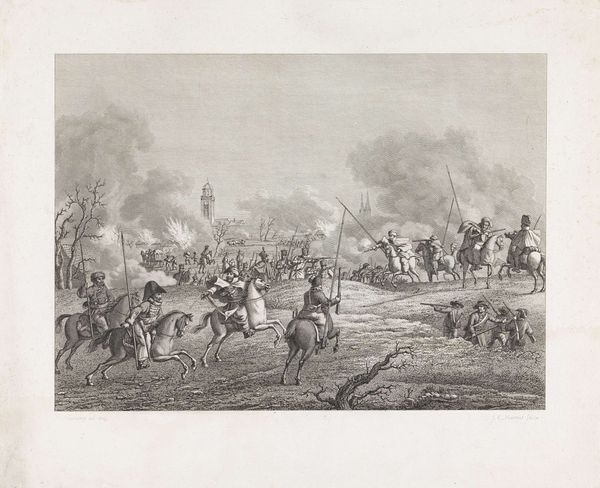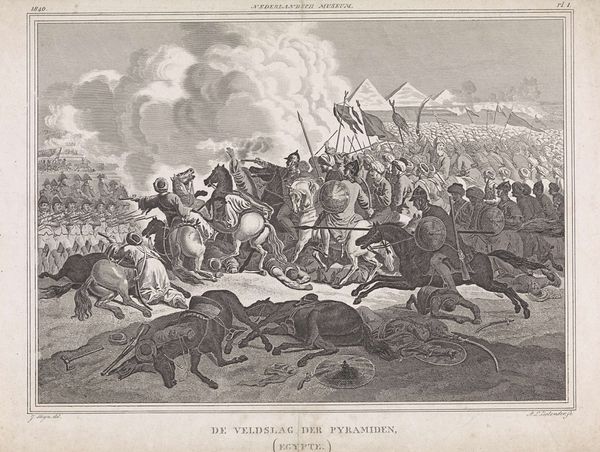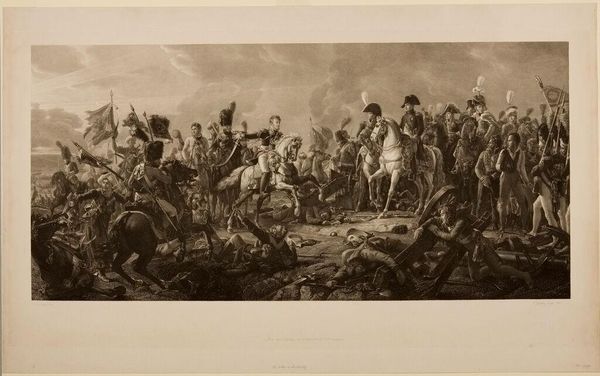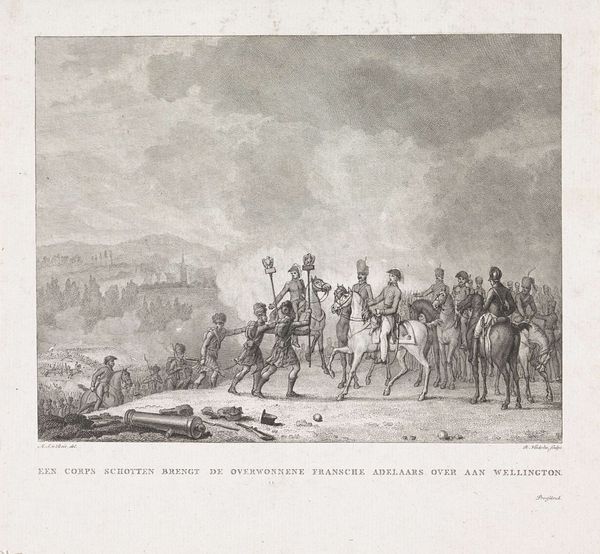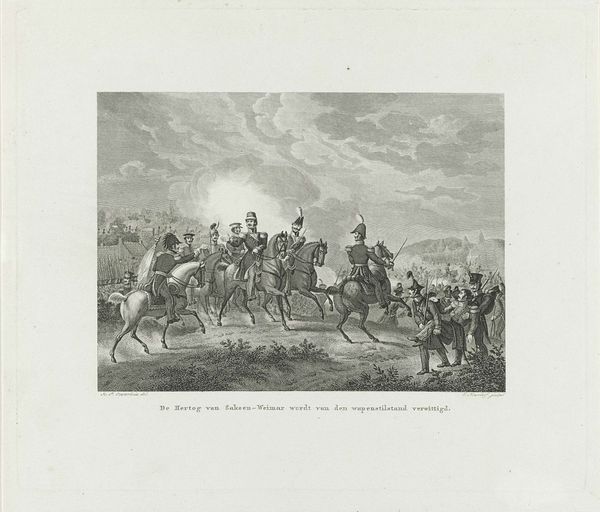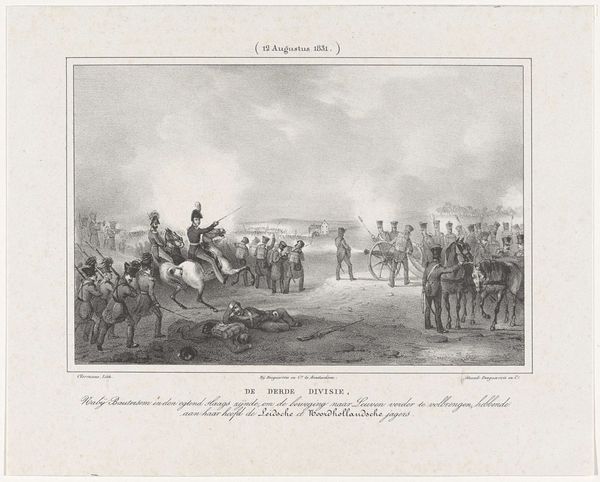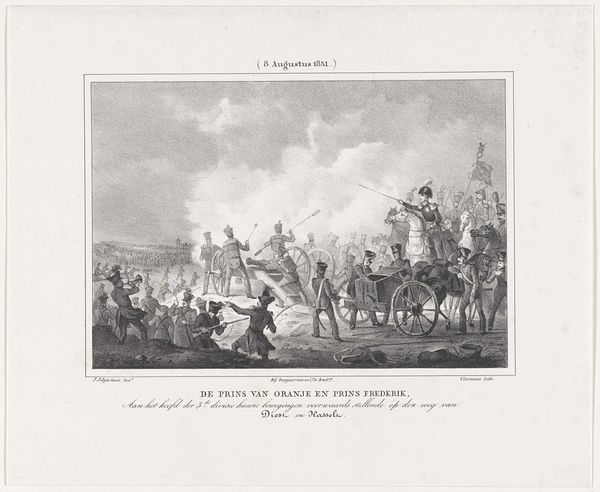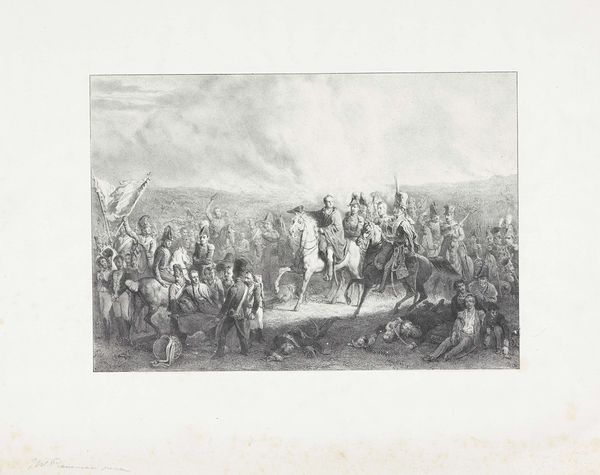
Dimensions: height 473 mm, width 566 mm
Copyright: Rijks Museum: Open Domain
Editor: We're looking at "Slag bij Waterloo, 1815" from 1865, made with graphite and engraving, and housed at the Rijksmuseum. The scene feels incredibly dynamic and… well, tragic. What do you see in this print? Curator: A beautifully rendered panorama of victory and devastation, wouldn't you agree? This piece resonates deeply with the Romantic era's fascination with historical grandeur, specifically warfare. What grabs my attention is how Last captures both the glory and the gruesomeness, almost a contradiction in terms! Notice how carefully rendered the individual faces are amid the chaos of the battle scene. Almost like portraits amidst carnage, what do you think of that? Editor: Yes! That tension is palpable. It’s like the artist is saying, "Remember these individuals, even within this overwhelming historical moment." And the vast landscape contrasting with those intimate details reinforces that tension. It's haunting. Curator: Indeed. Consider that this engraving was created half a century after the actual battle. It reflects a historical memory, a constructed narrative of national pride intertwined with the somber acknowledgement of loss. Does that temporal distance change how you interpret it? I almost wonder if this delay gave him more time to contemplate it? Editor: Definitely. It's not just documentation but a reflection, sifted through time and perhaps tinged with a nation's evolving identity. So much more nuanced than I initially thought. Curator: Art is so magical because it is about perspective isn't it? What seems simple can sometimes run incredibly deep. Editor: It is! This really makes you think about how we remember and represent history, not just what happened, but what it *means* through art. Thanks for your perspective!
Comments
No comments
Be the first to comment and join the conversation on the ultimate creative platform.

